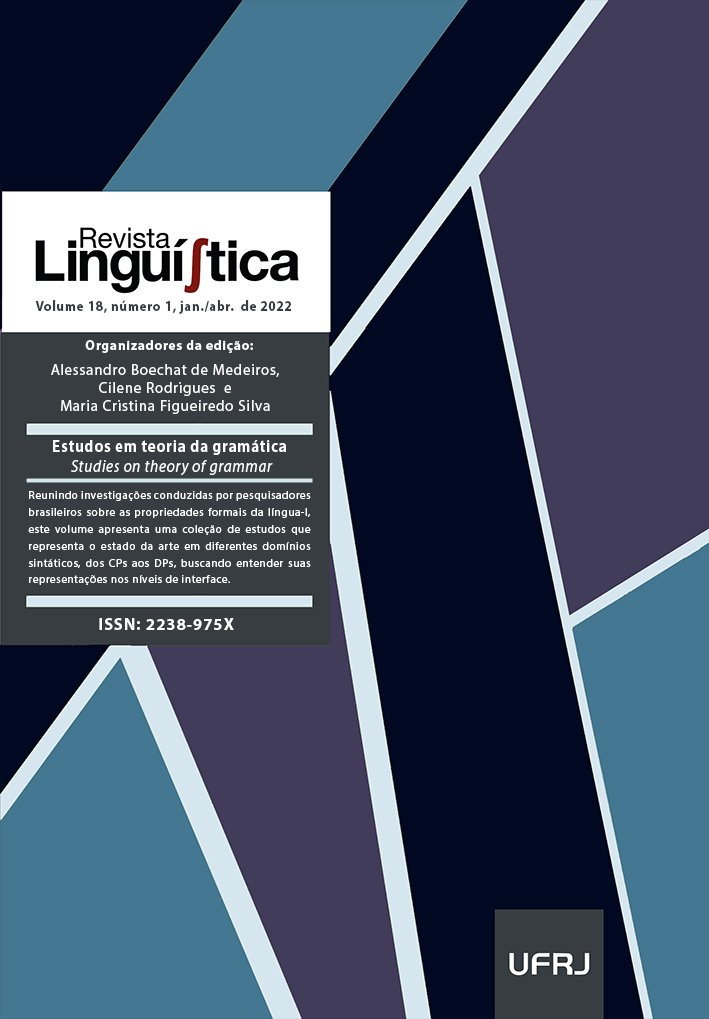The effect of input in the child production of Wh-questions in Brazilian Portuguese
DOI:
https://doi.org/10.31513/linguistica.2022.v18n1a52431Keywords:
wh-questions, wh-in situ, acquisition, Input, spontaneous dataAbstract
In Brazilian Portuguese (BrP), Wh-questions can be formed by moving the interrogative phrase (“What did the cat eat __?”) or keeping it in situ (“The cat ate what?”). The strategies seem, at first sight, optional and the Wh-in situ is reported as a productive strategy in BrP “paulistano” (dialect spoken in São Paulo) (LOPES-ROSSI, 1996; OUSHIRO, 2012). However, studies based on spontaneous data from children speaking BrP “paulistano” note that they almost never (or never) use this option (SIKANSI, 1999; GROLLA, 2000; GROLLA, 2009). As for the dialect spoken in Vitória da Conquista (BA), studied by Lessa-de-Oliveira (2003), the construction emerges rather early in children speech, being the most produced one in the input received by them. For the author, children follow the acquisition path of Wh-questions guided by the frequency found in the input. Aiming to explore the emergency of Wh-questions in child speech, comparing it to the input received by them, we studied a corpus of spontaneous speech of five children speaking BrP “paulistano”, between the ages 1;02.28 and 4;11.12. In our data, children preferred the moved-Wh, while adults opted more often for the Wh-que question. Furthermore, the Wh-in situ, being the least produced strategy by children was, overall, productive in adult speech. The results suggest that a high frequency in the input of a given construction does not, necessarily, amounts to a larger productivity in child speech.
Downloads
Published
Issue
Section
License
Authors who publish in the Revista Linguí∫tica agree with the following terms:
The authors maintain their rights, ceding to the journal the right to first publication of the article, simultaneously submitted to a Creative Commons license permitting the sharing with third-parties of published content as long as it mentions the author and its first publication in the Revista Linguí∫tica.
Authors may enter into additional agreements for the non-exclusive distribution of their published work (for example, posting in online institutional or non-profit repositories, or book chapters) so long as they acknowledge its initial publication in the Revista Linguí∫tica.

The journal Revista Linguí∫tica is published by the Post-Graduate program in Linguistics of UFRJ and employs a Creative Commons - Attribution-NonCommercial 4.0 International (CC-BY-NC).









